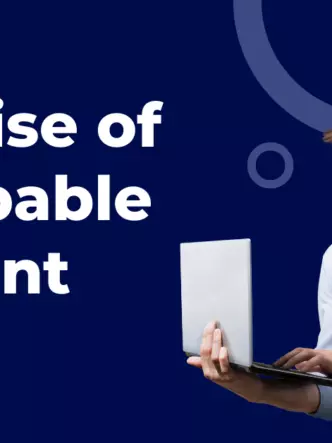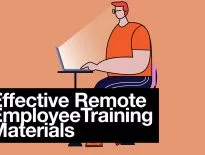
The way eCommerce sales are increasing in this day and age is exceptional. In 2017, US eCommerce sales were valued at $409 billion. Fast forward four years, online sales are projected to account for 18.1% of global retail sales. In 2022, they are expected to be worth $638 billion. There is no doubt that eCommerce is an integral part of our lives.
There is a reason why 81% of consumers conduct online research before buying something from an eCommerce store. But despite the popularity of eCommerce businesses, achieving high conversions is still a challenge.
Imagine — a visitor lands on your website and browses through multiple product categories before finally clicking on one product page. That is where you have to decide the page is well-designed and contains all the necessary information required to make a purchase.
Since they cannot touch, feel, or wear your products before buying, your product page’s content and design determine whether or not that visitor will convert. This article shares five tips you must follow to optimize your eCommerce product pages for higher conversions:
1. Use high-quality product images and videos
Physical shopping allows consumers to view products in person, touch them and observe every detail. In eCommerce, reproducing visual elements of your products online at par with their physical representation is a challenge but not impossible.
By featuring large, crisp, and interactive photos and videos of your products, you can build trust amongst your customers, convince them to click the “BUY” button, and subsequently boost conversions. However, that is easier said than done.
Many eCommerce business owners do not realize that good product photography can help:
- Create the right first impression
- Increase social sharing
- Differentiate from competitors
- Overcome objections or doubt regarding the products
Investing in an outside freelance photographer or a video production company makes it easy for your eCommerce store to stand above the competition. You can also structure your homepage design so that it hits the bull’s eye.
Minimalist wallet seller Bellroy has an interactive hero banner on the homepage, enabling visitors to see what they miss out on if they do not purchase the branded wallets. Larger product images increase conversions.

Take a step further and provide a 360-degree view of your products. Give a closer, real-life experience to your customers. This will give them the confidence in your products that descriptions alone cannot provide. Harry’s, a men’s grooming and shave supplier, has attractive product pages.

Alternatively, add product videos to the pages. These are mainly like review videos, minus the cons, and give the visitors a better idea of whether or not the product is perfect for them. It covers each aspect of the product and helps consumers arrive at quick decisions.
2. Personalize your product page recommendations
Every business often talks about personalization and how it works like a charm. But only a few implement it in their marketing. Research shows that 91% of consumers are more likely to purchase from eCommerce stores that provide personalized offers.
You do not have to personalize every corner of your website necessarily, but you can start with recommending product categories based on browsing behavior. Australian online fashion store The Iconic follows this practice.

Their category pages look like any other until you notice a little button on the images. When you click the button, it shows you “similar products” in the same category. The order of the products keeps changing, but the visitor gets to choose from a variety.
Another fashion brand Forever 21, lets you shop an entire outfit online, after which it recommends accessories to complete the look. It shows complementary products to the customers on the eCommerce store.

The outfit you see on the extreme left, in the above screenshot, is the main product, whereas others are mere complementary items that would go well with the former. This kind of ecommerce personalization can increase conversions by 10%.
In fact, 75% of customers are more likely to purchase based on personalized product recommendations. So, make your selling strategy more personalized. Upsell, cross-sell, and recommend products to increase your conversions.
3. Write crisp and compelling product page copy
You could spend days writing voluminous product descriptions. But the truth is visitors read only 20% of the text on any given web page. Instead of reading every sentence word-by-word, the common practice is to skim through the pages and consume only vital data.
Many eCommerce sites use the copy provided by the manufacturers and do not write creative ones to suit their brand voice and SEO. You might be selling a product that is similar to your competitors. How would you ensure you stand out? Through visuals and copy, of course!
a. Include what the product is made of
Make sure your product copy tells the visitor what it is made of or its ingredients. In the case of a service product, the copy should be about what it includes. If the product is made locally, use that info in the copy. Build trust in your products’ quality.
b. List detailed dimensions and measurements
This is especially important if you are selling tangible items like furniture, kitchenware, gadgets, and so on. Your visitors should be able to make a decision based on that. Sizing is all over the board these days. Simply stating “small,” “medium,” or “large” is not going to cut it.

c. Write in bullet points
The product copies should be written in bullet points and formatted with different font sizes, making the content easily scannable. Check out outdoor gear seller Patagonia’s well-written product descriptions:

The story highlights of the product are structured in a short paragraph. The specifications are in bullet points, and there are enough images and videos of the product to help a visitor make an informed decision.
You must also weave important information such as guarantees, shipment and delivery timelines and return policies so that your customers know what they will get from you.
d. Format, format, format
Formatting is just as important as the copy itself, so please do not ignore that. Use bolding, headers, and bullets to make the content scannable. Selective headers and bolding, for instance, draw your readers’ eyes to what you want them to see.
Chunking information and offsetting it with icons can help improve comprehension and retention. Fitbit does it nicely and properly. It showcases the product features in a very structured and simple manner.

If you are not happy with your product descriptions, seek the help of an in-house content writer or get an SEO agency to write compelling and search-optimized copy for your eCommerce store.
4. Optimize for mobile and speed
In a world where most internet searches begin on mobile, not optimizing your eCommerce store is a fail-proof way of “failing.” There is no way you are going to rank high in search results. In fact, Google also penalizes those sites which are not mobile-responsive.
That is because of its mobile-first indexing update. That means if your eCommerce product pages are not mobile-friendly, you will lose out on traffic, sales, and revenue. That is a huge price to pay for not doing one thing: mobile site optimization.
Therefore, test your site and make changes to it to ensure mobile compatibility. According to Statista, 82% of online shoppers in the US shop on their mobile phones, with 35% being mobile-only eCommerce shoppers.
Use tools like Google’s Mobile-Friendly Test to check the content and graphics offer the same user experience on mobile as they do on the desktop.
Since you would be using high-quality visuals on the page and lengthy descriptions, you must make sure the readability factor does not get hampered on mobile. If you want to create different versions of your product pages — perfect for mobile — do that.
Mobile responsiveness helps your website visitors buy from anywhere, anytime, and facilitate faster checkouts with digital mobile wallets. Magento themes are great for mobile optimization purposes. If budget is not a problem for you, get an Android, and iOS app developed.
Mobile apps offer an even better user experience than mobile sites and PWAs. Therefore, launch an app to boost your eCommerce product page conversions.
If your eCommerce site is not mobile-optimized, you will not win with Google, and you will not win with your customers.
5. Garner more social proof
Social proof is an excellent tactic that helps a business build its credibility. From landing pages and social media to email, one can incorporate elements of social proof (e.g., reviews and testimonials) in any form of marketing.
Product pages are no exception. For instance, apart from writing descriptions and adding powerful visuals to the page, you can include an industry figure, an in-house survey result, or a testimonial on the product page to give your product more credibility.
How is this sentence?: “89% of first-time buyers found our Assam chai latte bags exceptional!” It adds depth to your offering, right? In fact, Amazon leverages social proof through its 5-star rating system. So does other eCommerce brands such as ModCloth, as you can see below:

Use social signals to boost your brand’s trustworthiness and improve rankings. That is correct — search rankings appreciate them more if you use them frequently across your site.
Customers may help with long-tail keyword searches as the language used could be similar to the ones other buyers are using to search for your product. You can add a Heart or Like button, social media share bars, logos from other companies that use your products, and so on.
Social proof acts as proof of confidence and helps you leverage online reviews from happy customers. These elements make visitors feel like they are missing out on something if they do not purchase at the earliest, thus influencing product conversions positively.
Optimize your product pages today!
The tips, as mentioned above, do not guarantee results, but they increase your chances of converting a website visitor. Therefore, invest in high-quality visuals, write a stellar product copy, make your pages mobile-responsive and incorporate different social proof elements to show your products are worth a purchase. Follow all tips slowly and steadily, and you will undoubtedly improve sales in the long run.









